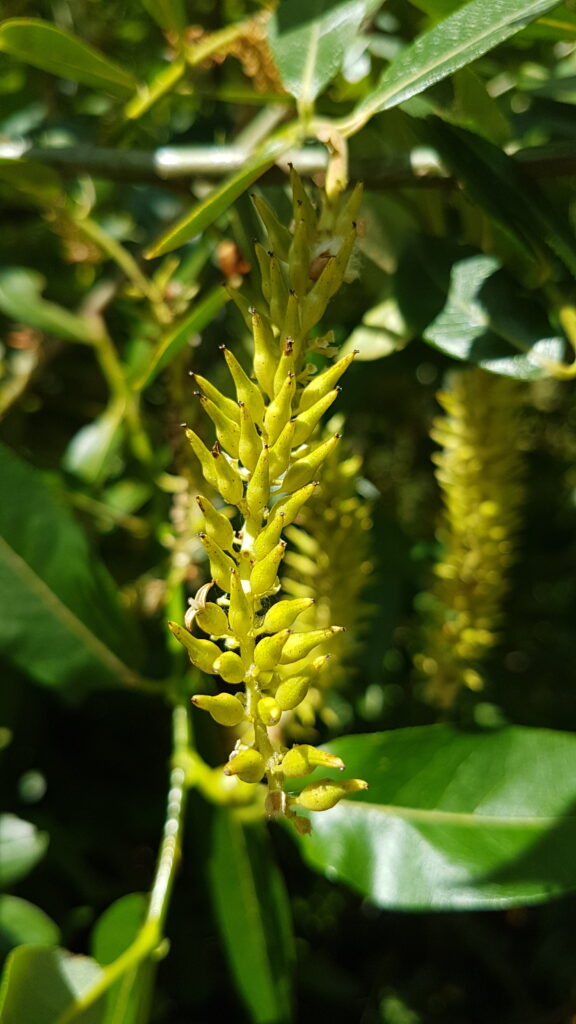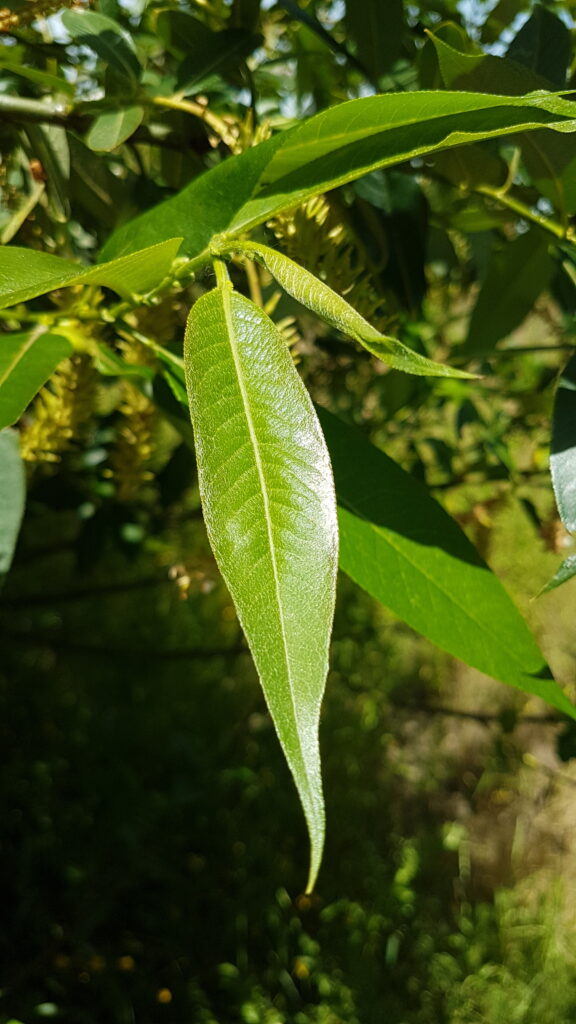Pacific Willow (Salix lucida)

The Pacific willow, also called the shining willow, is a small tree or large shrub that is native to BC. It has long, thin branches and narrow, dark green leaves. The undersides of the leaves are grey-green and hairy. The Pacific willow produces yellow catkins in the spring, and seed capsules in the late summer. The seeds are surrounded by white fluff, and are dispersed by the wind.

First Nations communities in BC have many different uses for Pacific willow. The bark was used to make string, and the branches were used for firewood, or to weave baskets. Willow also has many medicinal uses; its bark contains an anti-inflammatory chemical called salicin, which is very similar to the active ingredient in aspirin. First Nations people in BC used a tea made from the leaves or bark of Pacific willow to treat fevers or minor pain.

Pacific willow mainly grows in moist areas, especially along the banks of streams and rivers. They help to control erosion, and also provide a source of food for moose and deer, especially during the winter. Pacific willows are also important for salmon habitat, because the branches overhang streams and provide shade and cover for juvenile salmon.
For more information about Pacific willow, visit E-Flora BC or the Native Plants PNW website.


